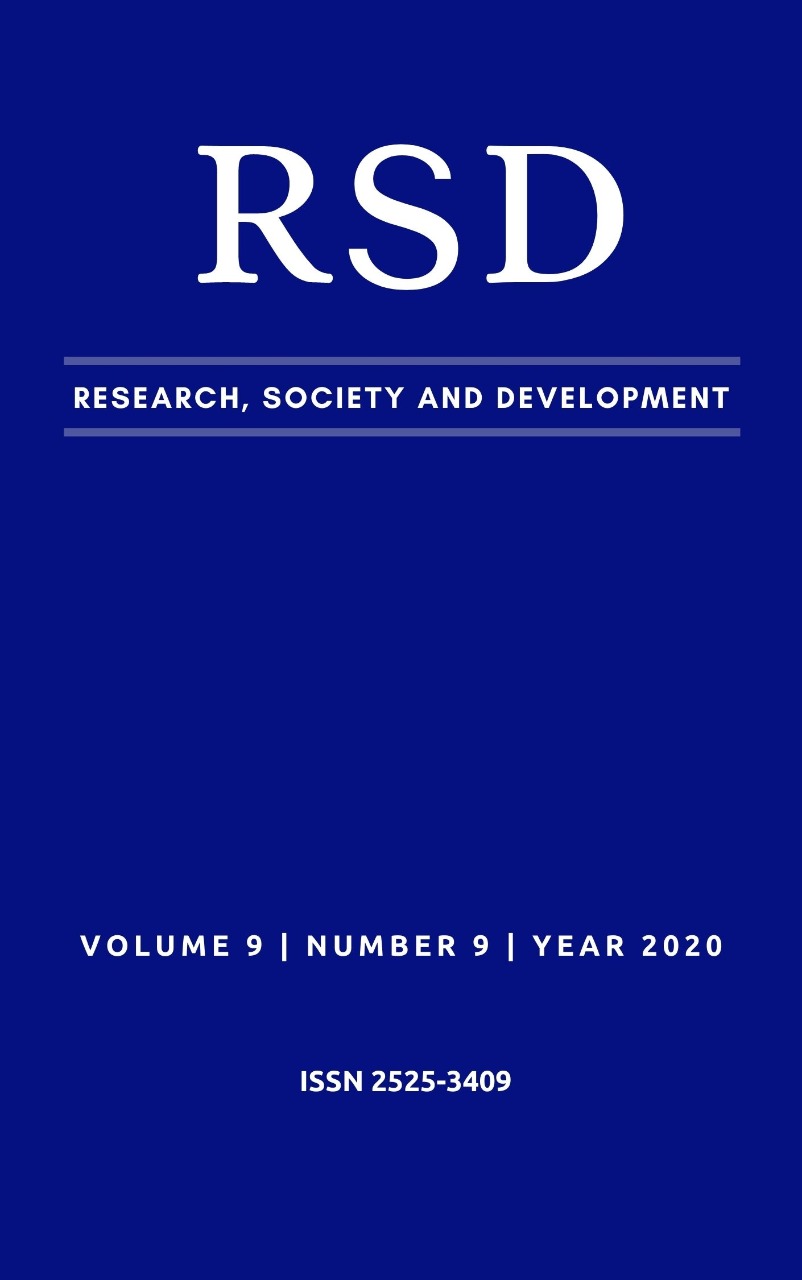Evaluation of an empirical model used for deriving the fluidization velocity of binary mixtures of biomasses and sand
DOI:
https://doi.org/10.33448/rsd-v9i9.6648Keywords:
Fluidization velocity, mixture binary, empirical model, statistical modelAbstract
In a previous study, a statistical model was developed using the experimental planning technique for evaluating the influence of its variables on fluidization velocity. In this study, we investigated the Vasconcelos-statistical model (VSM) in data representation, considering fluidization with and without segregation. The methodology used was based on the simulation of the fluidization velocity of nine binary systems, comprising sand, and eight biomasses published by six authors. In addition, the results obtained using VSM were compared with those obtained using five other models, reported by different authors, but adjusted to the experimental data of these biomasses. The result obtained by the proposed models mainly indicated a discrepancy between the experimental and calculated fluidization velocities. VSM, using only three variables (particle size, particle diameter, and biomass mass fraction), yielded results of smaller discrepancy values in all simulations (2.23–12.51%), as opposed to the other comparative models, which presented more significant numbers of variables. Thus, VSM is defined as one of the most interesting models for predicting the fluidization velocity of several biomasses.
References
Broyden, C.G. Quasi-Newton methods and their application to function minimisation. (1967). Mathematics. Computation. 21, 368–381. MR 0224273, https://doi.org/10.1090/S0025-5718-1967-0224273-2.
Bridgwater, A.V. (2004). Biomass fast pyrolysis - Review paper. Therm. Sci., 8 (2), 21-49.
Chiba, S., Chiba, T., Nienow, A.W., Kobayashi, H. (1979). The minimum fluidization velocity bed expansion and pressure drop profile of binary particle mixtures. Powder Technology, 22, 255-269.
Formisani, B., Girimonte, R. (2003). Experimental analysis of the fluidization process of binary mixtures of solids. Kona, 21, 66-75.
Formisani, B., Girimonte, R., Vivacqua, V. (2011). Fluidization of mixtures of two solids differing in density or size. AIChE Journal, 57 (9), 2325-2333.
Formisani, B., Girimonte, R., Vivacqua, V. (2013). Fluidization of mixtures of two solids: a unified model of the transition to the fluidized state. AIChE Journal, 59 (3), 729-735.
Hooke, R., Jeeves, T.A. (1961). Direct search solution of numerical and statistical problems. Journal Association Computing Machinery., 8, pp.212-229.
Jeong, J-Y., Lee, U-D., Chang, W-S., Jeong, S-H. (2016). Production of bio-oil rich in acetic acid and phenol from fast pyrolysis of palm residues using a fluidized bed reactor: Influence of activated carbons. Bioresource Technology, 219, 357–364.
Oliveira, T.J.P., Cardoso, C.R., Ataíde, C.H. (2013). Bubbling fluidization of biomass and sand binary mixtures: Minimum fluidization velocity and particle segregation. Chemical Engineering and Processing, 72, 113-121.
Paudel, B., Feng, Z-G. (2013). Prediction of minimum fluidization velocity for binary mixtures of biomass and inert particles. Powder Technology, 237, 134-140.Yang, W. (2003). Handbook of Fluidization and Fluid-Particle Systems. Edited by Wen-Ching Yang, 12-38.
Rao, T.R., Bheemarasetti, J.V.R. (2001). Minimum fluidization velocities of mixtures of biomass and sands. Energy, 26, 633–644.
Rosenbrock, H.H. (1960). An automatic method for finding the greatest or least value of a function. Computer Journal, 3, 175-184.
Si, C., Guo, Q. (2008). Fluidization Characteristics of Binary Mixtures of Biomass and Quartz Sand in an Acoustic Fluidized Bed. Industrial & Engineering Chemistry Research, 47, 9773–9782.
Vasconcelos, D., Batalha, G., Pereira, L. G., Pires, C. A. (2018). Fluidization for Binary Mixtures of Sisal Residue and Sand: A New Model for Deriving the Final Fluidization Velocity. Particuology, 40, 10–22.
Wang, F., Zeng, X., Wang, Y., Su, H., Yu, J., Xu, G. (2016). Non-isothermal coal char gasification with CO2 in a micro fluidized bed reaction analyzer and a thermogravimetric analyzer. Fuel, 164, 403–409.
Wen, C.Y., Yu, Y.H. (1966). A generalized method for predicting minimum fluidization velocity. American Institute of Chemical Engineers, 12, 610-612.
Yang, W. C. (Ed.). (2003). Handbook of fluidization and fluid-particle systems. (pp. 12–38). Boca Raton: CRC press.
Zhong, W., Jin, B., Zhang, Y., Wang, X., Xiao, R. (2008). Fluidization of biomass particles in a gas–solid fluidized bed. Energy Fuels, 22, 4170–4176.
Downloads
Published
Issue
Section
License
Copyright (c) 2020 David da Silva Vasconcelos, Sirlene Barbosa Lima, Ana Cristina Morais da Silva, José Mário Ferreira Júnior, Carlos Augusto de Moraes Pires

This work is licensed under a Creative Commons Attribution 4.0 International License.
Authors who publish with this journal agree to the following terms:
1) Authors retain copyright and grant the journal right of first publication with the work simultaneously licensed under a Creative Commons Attribution License that allows others to share the work with an acknowledgement of the work's authorship and initial publication in this journal.
2) Authors are able to enter into separate, additional contractual arrangements for the non-exclusive distribution of the journal's published version of the work (e.g., post it to an institutional repository or publish it in a book), with an acknowledgement of its initial publication in this journal.
3) Authors are permitted and encouraged to post their work online (e.g., in institutional repositories or on their website) prior to and during the submission process, as it can lead to productive exchanges, as well as earlier and greater citation of published work.


